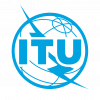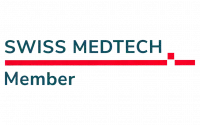BLOG
Telecom26 blog
5G and LEO satellites offer the promise of ‘Massive IoT’ capabilities at sea

But help is at hand. One of the most promising use cases for 5G, for example, is that of connecting thousands of items in an ultra-dense shipboard environment. In fact, 5G has a central role to play in serving massive deployments of IoT devices and applications in maritime environments.
As noted in a previous blog (‘What will 5G mean for maritime communications?’), Ultra Large Container ships are estimated to carry more then 10,000 TEUs (Twenty-Foot Equivalent Units, or a standard shop container), while a new class of ship is emerging that can carry more than 21,000 TEUs. Image that each container can hold thousands of individual items and it offers some idea of the size of the challenge.
In order for freight companies to monitor goods in transit, they need to equip containers, and in some cases individual products (which may be up to 100,000 devices per ship), with IoT capabilities, and therein lies the problem.
However, 5G offers a perfect solution. Private 5G networks on board will be able to provide the on-board coverage needed to serve the increasingly sophisticated and ultra-dense needs of a completely connected cargo of 20,000 containers. In addition, it will be able to serve new requirements, such as blockchain-enabled documentation and passporting.
Telecom26 is also working towards connecting these private 5G networks via partners for satellite backhaul for offshore connectivity, while leveraging our unique handover to shore-based networks when in range. In some instances, these will also capitalise on mesh arrangements, to ensure signals can be propagated into the most distant recesses of such ships.
But other technologies are also emerging as a solution for this problem. In the last year, Leosat announced that it will create two new space and mobile network technologies to offer alternatives to geostationary satellites for machine-to-machine (M2M) communications (IoT) for maritime and offshore applications.
Low Earth orbit (LEO) broadband satellites are set to provide a low-latency network dedicated to data transmissions for backhaul from ships and offshore facilities. Combined with the development of 5G, the two technologies will provide significantly more bandwidth for data, delivering a solution to offer IoT capabilities at sea.
Telecom26’s maritime router solution assures contiguous connectivity from any technology where Network priorities can be established based on coverage, cost and performance. The maritime router is able to connect to all technologies and seamlessly manage the handover and load balancing of the connectivity service. It can be standalone, or as part of a ship-wide private network deployment for larger vessels Adding the option of LEO connectivity to the router provides the IP backhaul required to enable cellular service. This solution coupled with cellular maritime provides the ability to always be connected on the best serving means of transport.
Leosat’s proposed LEO satellite constellation will be dedicated to data transmissions and constructed for enterprise connectivity with capacity for connecting offshore drilling rigs and shipping in remote ocean areas for M2M applications. Furthermore, it will be a secure network, bypassing the public internet and other terrestrial networks. It provides backhaul from remote 3GPP-based mobile RAN solutions, such as 3G, 4G and 5G. As a result, RAN can be deployed in any region, separated from the main network and connected via satellite backhaul to the core.
Combined with the development of 5G, and other existing connectivity technologies such as
high-throughput and medium orbit satellites, it means that there are real advances being made in the area of providing complete voice and data communications, as well as IoT capabilities for masses of devices and containers wherever they may be on the ocean. Telecom26 is proud to be leading the way in the development and deployment of some of these technologies.



